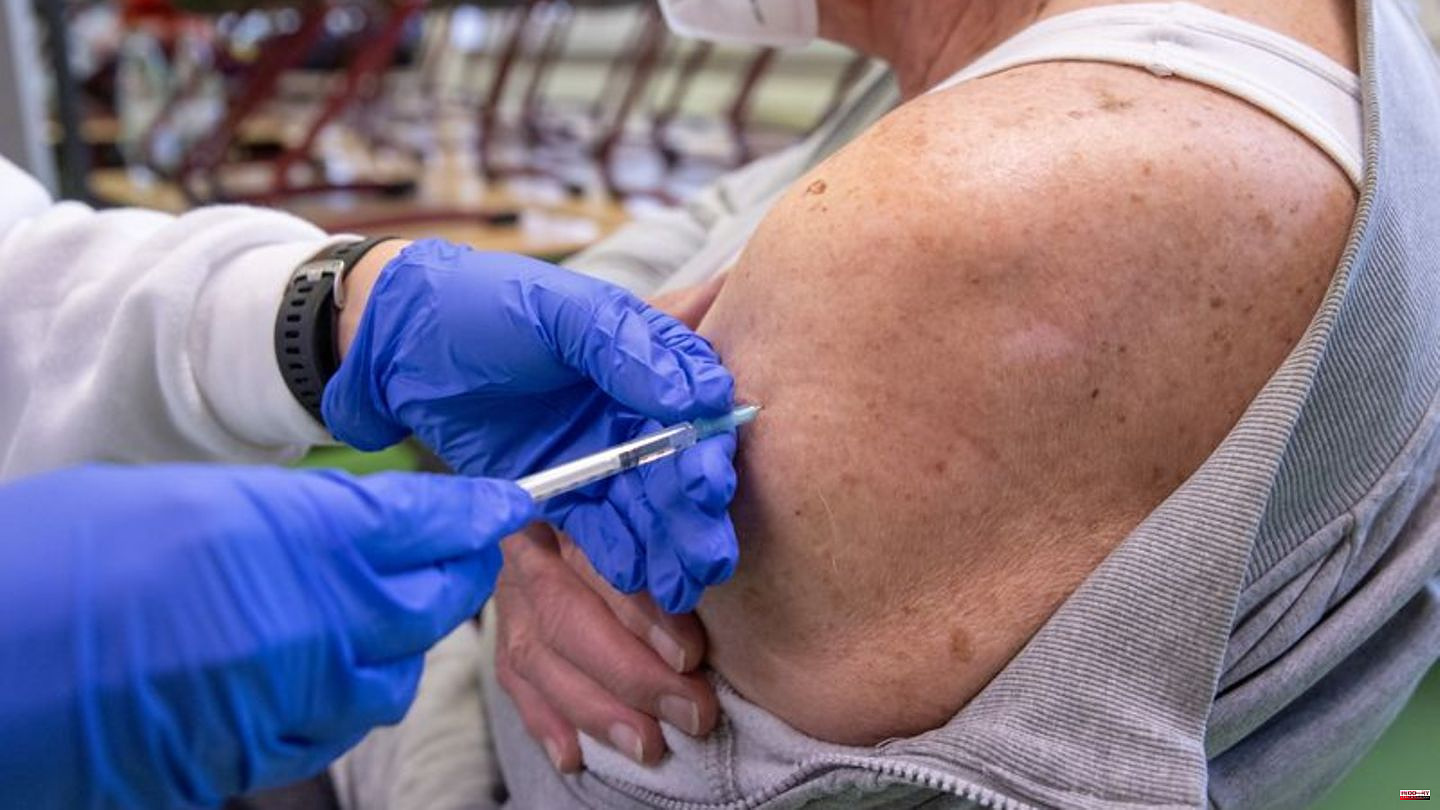It's routine when it comes to flu protection: vaccines are adjusted every year because the virus is constantly changing. More than two and a half years after the start of the pandemic, the time has come for Covid-19.
The first vaccines, which no longer only target the so-called wild type of Sars-CoV-2, are likely to come onto the market shortly. The prerequisite is that a committee of the European Medicines Agency EMA gives the green light for approval. That could be the case on Thursday. Questions and answers on this.
What vaccines are we talking about now?
The Committee for Medicinal Products for Human Use is evaluating two so-called bivalent mRNA vaccines from the companies Biontech/Pfizer and Moderna. Bivalent means that two components are taken into account: The preparations should offer protection against both the original Sars-CoV-2 and the omicron subline BA.1. Specifically, according to the EMA, the committee checks whether quality, safety and effectiveness requirements are met and whether there is a positive risk-benefit ratio.
Will approval come?
According to the Secretary General of the German Society for Immunology, Carsten Watzl, the EU-wide approval of the BA.1 booster is a formality: clinical data are available and the preparation has been tested on several hundred subjects. The antibody reactions were compared with a control group that had received the previous vaccine a fourth time. "You saw significantly more antibodies against the omicron variant in people with the adapted vaccine - in young people, old people and those who have recovered," said Watzl. In addition, there would be safety data on mRNA vaccines in general.
How effective are the new vaccines?
Percentages, such as those given for the first Covid 19 vaccines, were not collected. Data on protection against symptomatic infection, serious illness and death can only be expected from use. The aim is better protection against omicrons - and above all against the disease, because protection against the infection will only be temporary after the vaccination, said Watzl. He warned politicians against raising false hopes with the adapted vaccines - even with that you could not vaccinate Corona. "If you peddle it now on a large scale and call on everyone to get the vaccination, you're repeating the mistakes of last year."
Which groups need the customized booster?
This answer would have to come from the responsible Standing Vaccination Committee (Stiko) - but there is still no recommendation for the new preparations. This is causing criticism among general practitioners and specialists, who are now receiving many inquiries. According to the plan, the vaccination should finally start quickly in Germany. Subject to approval, around 14 million doses of the BA.1 preparation from Biontech/Pfizer and Moderna are to come in the two weeks starting September 5, according to a letter from Health Minister Karl Lauterbach (SPD), which became known at the beginning of the week.
Is it foreseeable who will benefit from the new booster?
The immunologist Watzl considers a recommendation for a second booster with the new preparations only likely for certain groups - such as people over 60 years of age, with a suppressed immune system or with previous illnesses. "I would be very surprised if the Stiko said that all adults should be vaccinated again." He does not want to anticipate the Stiko - but above all risk patients benefited. "A serious illness is less likely." So if you are over 60 and have so far waited with the fourth vaccination, now is the opportunity for you.
What should be considered when vaccinating?
According to experts, timing is very important. Watzl said that anyone who has already followed the existing Stiko recommendation for a fourth vaccination or has been infected with Corona in the past few months should allow at least six months to elapse before the next vaccination. "That means that if you only got vaccinated two months ago, you should definitely wait another four months." Another booster after too short a time does not bring any additional benefit. According to Watzl, for some risk patients it could make sense to inject the adapted vaccine earlier - this must be discussed individually with the doctor.
What about healthy people under 60?
For them, the additional booster is usually not needed, said Watzl. Nevertheless, he spoke out in favor of not generally denying younger people the BA.1 booster: Since the vaccines, albeit only temporarily, created more protection against infection, vaccination could make sense if someone had risk patients in the family wants more foreign protection.
BA.1 - what is it?
After the Corona variants Alpha and Delta, Omikron, a mutant with a heavily modified genetic make-up, appeared at the end of 2021. She can thus better avoid the first line of defense of vaccinated and recovered. The omicron waves were caused by different omicron sublineages: first by BA.1, later by BA.2, and in the summer months mainly by BA.5. According to data from the Robert Koch Institute (RKI), BA.1 has not been found in random samples in Germany for a long time.
Is it worth waiting for a more recent vaccine?
There is a prospect of a vaccine that is adapted to the currently circulating BA.4/BA.5 sublines. Biontech/Pfizer have applied for emergency use authorization from the US Food and Drug Administration (FDA). The EMA is also examining an application in the so-called rolling review process, as it was said on request - one is still waiting for further data.
Immunologist Watzl clearly advises those who want to be vaccinated not to wait. "There is no clinical data on this vaccine candidate yet." One can only speculate about the benefits - also in view of the unforeseeable development of the prevailing variants in the coming months. The modalities of approval in the EU and their timing are also open. Experts also point out that the big jump in virus development was between wild-type and BA.1, with far fewer mutations between BA.1 and BA.4/BA.5.












